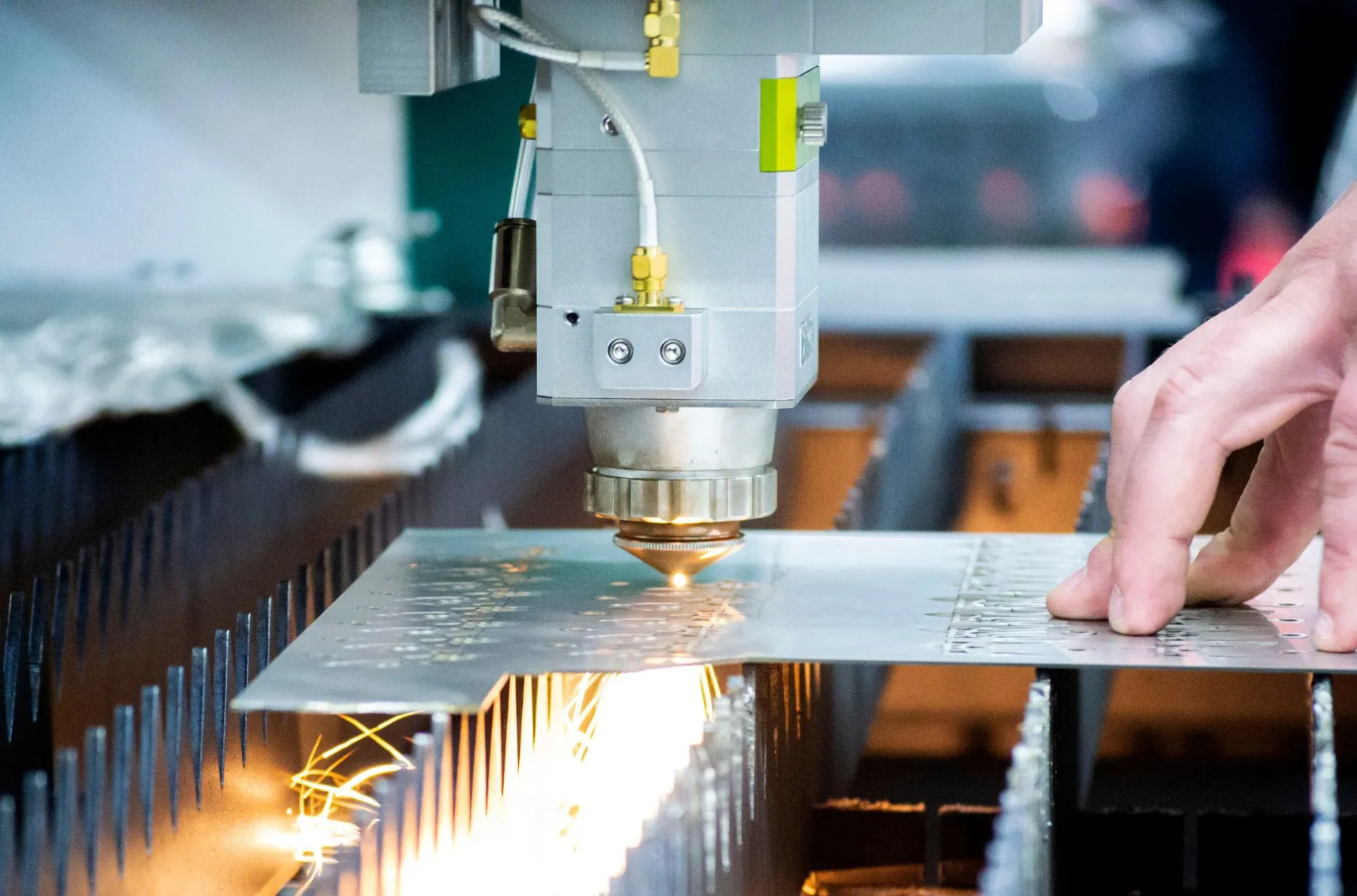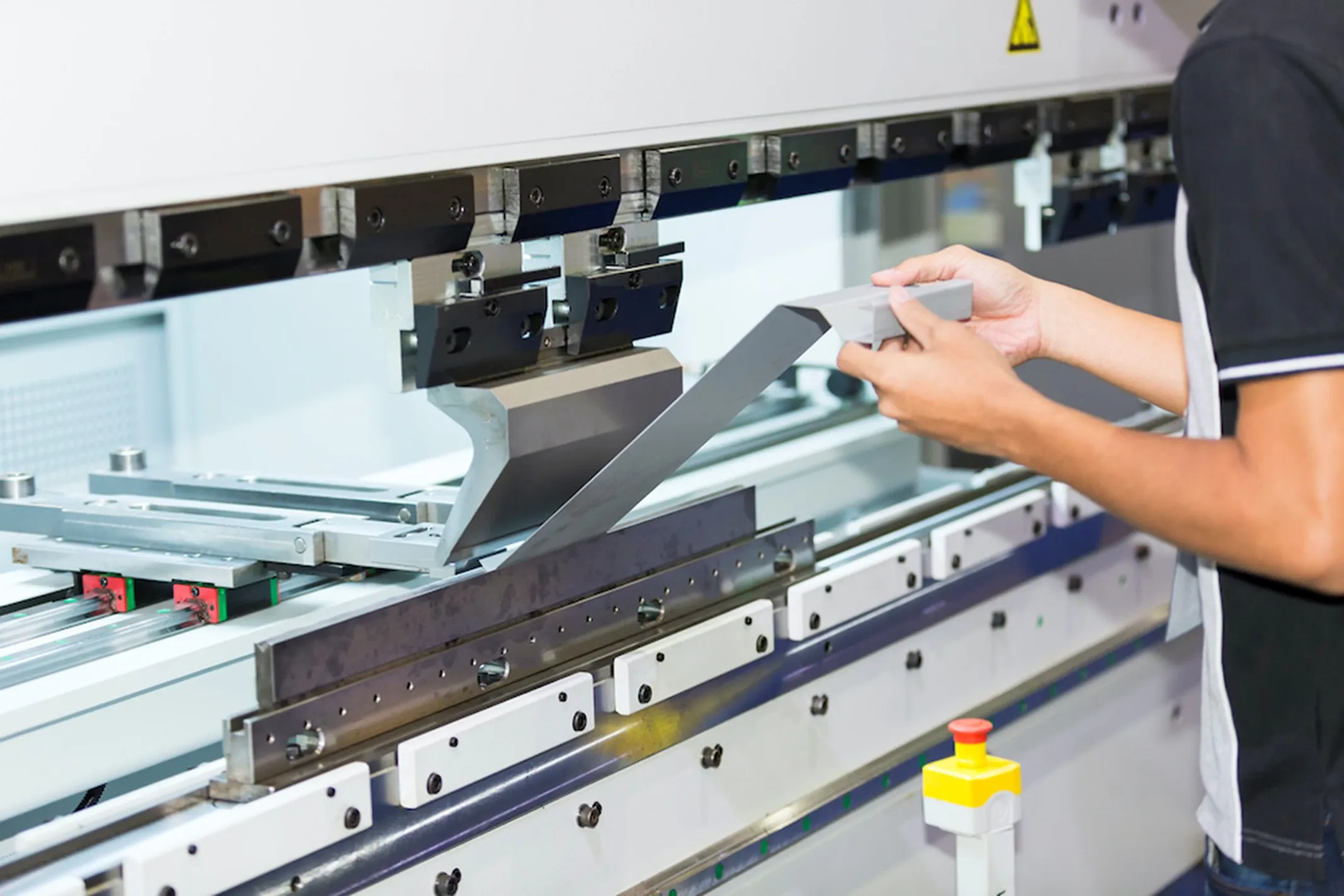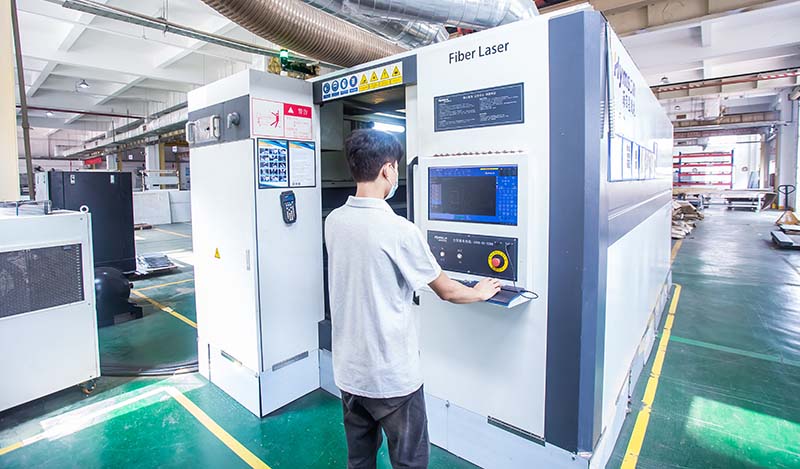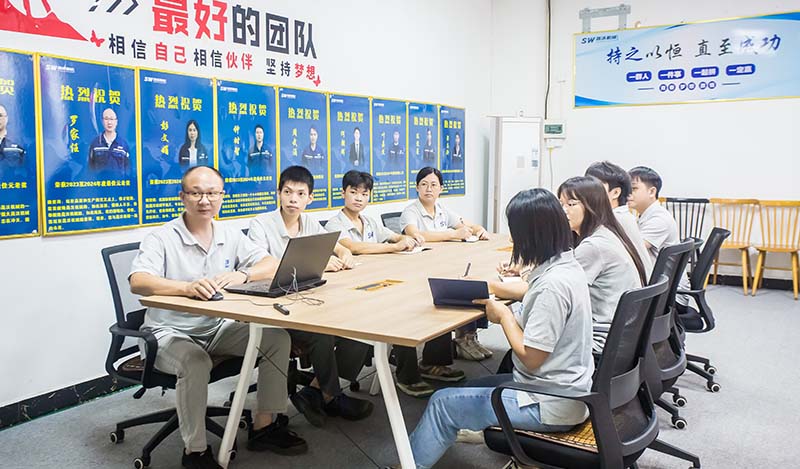Thin metal laser cutting services are a widely used thermal cutting process in sheet metal fabrication. We have invested in advanced laser cutting technology to rapidly and precisely melt and burn metal. Utilizing the latest software and engineering techniques, Shengwo, as a precision sheet metal manufacturer, can customize your orders and deliver them according to your exact specifications.
Our laser cutting services are trusted by 50.3% of the Fortune Global 500, demonstrating our capability to manufacture virtually anything from metal with precision and reliability!
In this post, you will learn:
- Core advantages of thin metal laser cutting services
- Quality control in thin metal laser cutting services
- Why choose Shengwo

Core Advantages of Thin Metal Laser Cutting
1. Micron-Level Precision with ±5µm Tolerance
Thin metal laser cutting utilizes high-precision fiber or femtosecond laser technology, achieving an accuracy of up to ±5µm. This level of precision is critical for industries such as medical devices, electronic components, and aerospace, ensuring that every component meets its exact design specifications.
2. Non-Contact Processing
Traditional mechanical cutting methods exert physical pressure on materials, potentially causing minor deformations or damage. In contrast, laser cutting is a non-contact processing technique that uses a high-energy laser beam to directly melt or vaporize the material without physical contact. This significantly reduces mechanical stress, preserving the original shape and strength of the finished product.
3. Minimal Heat-Affected Zone (HAZ)
The high energy of laser cutting is concentrated within an extremely small focal area, minimizing the heat-affected zone (HAZ). This ensures that the surrounding material remains free from deformation, annealing, or discoloration caused by high temperatures, preserving the metal’s physical and chemical properties—especially crucial for precision parts manufacturing.
4. Capability for Complex Geometries
Laser cutting offers exceptional flexibility in creating intricate designs that traditional mechanical methods struggle to achieve. It can precisely process micro-holes smaller than 0.1mm, high-density fine meshes, and intricate engraving details, making it an ideal solution for electronics, decorative items, and high-end industrial components.
5. Compatibility with Various Metal Materials
Thin metal laser cutting is highly adaptable to a wide range of metal materials, including:
- Stainless Steel – Excellent corrosion resistance, ideal for medical and food industries.
- Aluminum – Lightweight properties, making it suitable for aerospace applications.
- Titanium – High strength and biocompatibility, widely used in medical implants.
- Copper & Brass – Superior electrical conductivity, essential for electronics manufacturing.
Related articles:
Latest Laser Cut Hypotube Solutions in 2025
Precision Sheet Metal Fabrication Guideline

Quality Control in Thin Metal Laser Cutting Services
Thin metal laser cutting is widely used in high-precision industries such as medical devices and aerospace, where strict quality control is essential. The accuracy, performance, and longevity of the final product depend on precise cutting. In industries like healthcare, even the slightest dimensional deviation can pose serious risks to human life. To ensure top-quality cutting, stringent inspection requirements must be met, and the process must comply with relevant industry standards.
Below are Shengwo’s key quality control measures, inspection methods, and industry standards for thin metal laser cutting services:
1. Precision Control & Dimensional Inspection
Requirements
- Ensure dimensional tolerances are controlled within ±0.05mm (or up to ±5µm for industries like microelectronics and aerospace).
- Critical features such as hole diameters and edge distances must adhere to CAD design specifications.
- Contour accuracy and geometric tolerances must meet specific product usage requirements.
Inspection Methods
- Laser Rangefinder / Coordinate Measuring Machine (CMM) – High-precision measurement of dimensions, hole positions, and edge straightness.
- Projector or Image Measuring Instrument (IM) – Ideal for microstructure dimension inspection, ensuring micron-level tolerance precision.
- Calipers & Micrometers – Used for standard dimensional measurements to verify compliance with basic tolerance requirements.
Relevant Standards

2. Cut Surface Quality & Roughness Inspection
Requirements
- The cut surface must be smooth, free from burrs, dross, or visible ripples.
- The surface roughness (Ra value) should typically range between 1.6–6.3 µm, with high-precision requirements reaching below 0.8 µm.
- The heat-affected zone (HAZ) must be minimized to preserve the material’s original properties.
Inspection Methods
- Roughness Tester (Ra Measurement) – Evaluates surface finish to ensure cutting edges meet quality requirements.
- Microscopic Examination (SEM/OM) – Magnified analysis to detect micro-cracks, burrs, or dross residues on the cut edge.
- Tactile & Visual Inspection – Combines touch and visual evaluation to confirm edge quality and ensure no visible defects.
Relevant Standards
- ISO 4287 (Surface Roughness Standards)
- GB/T 1031 (Chinese Surface Roughness Standard)
3. Cut Section Quality Inspection
Requirements
- Cutting perpendicularity error should be controlled within ±0.1° to ensure a straight, uniform cut edge.
- No excessive melting, dross adhesion, or noticeable taper to guarantee a clean edge.
- The cut section must be free of pores, cracks, or excessive material burning.
Inspection Methods
- Metallographic Microscope Analysis – Observes the cut section’s microstructure and assesses the heat-affected zone (HAZ).
- Scanning Electron Microscope (SEM) – High-magnification examination to detect cracks, impurities, or structural defects.
- Laser Confocal Microscope – Measures the flatness and perpendicularity of the cut section in 3D.
Relevant Standards
- ISO 9013 (Laser Cutting Section Quality Assessment)
- GB/T 16865 (Chinese Metal Cutting Quality Standard)

4. Heat-Affected Zone (HAZ) & Material Performance Inspection
Requirements
- HAZ must be smaller than 0.5mm to ensure that the mechanical properties of the material are not compromised by laser heat.
- Material hardness, strength, and ductility should remain within allowable limits.
- Prevent undesirable effects such as grain growth or hardness variation caused by high temperatures.
Inspection Methods
- Microstructure Analysis – Examines the HAZ area to verify that the heat treatment effect meets standards.
- Hardness Testing (HV / HR) – Evaluates material hardness changes after laser cutting.
- X-ray Fluorescence Spectroscopy (XRF) – Analyzes material composition to prevent alloy alterations due to heat exposure.
Relevant Standards
- ASTM E3 (Metallographic Analysis Standard)
- ISO 6507 (Vickers Hardness Testing Standard)
5. Deformation & Residual Stress Inspection
Requirements
- The cut metal parts should not exhibit significant warping or deformation, with a maximum deviation of ±0.1mm.
- Residual stress must be minimized to prevent cracks or distortions during subsequent processing or usage.
Inspection Methods
- Coordinate Measuring Machine (CMM) – Measures the overall dimensions and flatness of the cut part to ensure no deformation.
- X-ray Residual Stress Analysis (XRD) – Determines internal stresses in the metal to avoid stress concentration issues.
- Finite Element Analysis (FEA) – Uses simulation modeling to predict deformation and optimize cutting parameters.
Relevant Standards
- ISO 20473 (Optical Stress Analysis Standard)
- GB/T 50282 (Residual Stress Testing Standard)
6. Material Compatibility & Laser Parameter Optimization
Requirements
- Optimize laser cutting parameters (power, speed, gas type) based on different metal materials such as stainless steel, aluminum, copper, and titanium.
- Ensure cutting quality meets material property requirements without cracks, excessive melting, or thermal damage.
Inspection Methods
- Optical Emission Spectroscopy (OES) / XRF – Confirms material composition to ensure compatibility with the laser cutting process.
- Laser Parameter Optimization Experiments (DOE) – Uses experimental data to refine cutting processes and enhance quality stability.
Relevant Standards
- ISO 15609 (Laser Processing Procedure Standards)
- GB/T 19864 (Laser Cutting Process Control Standard)
By adhering to these strict quality control measures, Shengwo ensures that thin metal laser cutting services deliver exceptional precision, minimal thermal impact, and superior material integrity—meeting the highest industry standards for aerospace, medical, and electronics applications.

Shengwo’s Thin Metal Laser Cutting Services
Cutting Thickness Up to 1 Inch
Our factory is equipped with 8kW and 10kW fiber laser machines, capable of cutting through steel, stainless steel, and aluminum up to 1 inch thick. These machines deliver exceptional cutting quality with minimal burrs.
For thick metals, cutting quality largely depends on heat accumulation. Our fiber laser cutters utilize water cooling during cutting to maintain material stability and apply a small amount of oil during piercing to reduce splatter, ensuring a cleaner and more precise cut.
Unmatched Aluminum Cutting Quality
Cutting aluminum with fiber lasers is often challenging, as materials thicker than 1/8 inch typically develop consistent burrs along the edges. However, with our advanced techniques and skilled operators, we have nearly eliminated burr formation on aluminum up to 1 inch thick. Even for 1-inch aluminum plates, our process produces significantly fewer burrs than what traditional fiber lasers leave on 1/4-inch sheets.
Superior Precision in Thin Metal Laser Cutting
Our fiber lasers achieve precision levels of ±0.005 inches, ensuring exceptionally high accuracy for even the most intricate designs. We minimize or completely eliminate tapering, even in thicker materials, ensuring that you receive consistent, high-performance parts every time.
Whether you need custom laser-cut metal ornaments or thin metal laser cutting services, Shengwo is committed to meeting your most demanding requirements.
Beyond Thin Metal Laser Cutting Services
In addition to thin metal laser cutting, we offer a comprehensive range of custom metal sheet processing services. Our facilities, along with our trusted manufacturing partners, specialize in metal perforation and fabrication, including:
✅ Die manufacturing
✅ CNC punching & drilling
✅ Laser cutting & shearing
✅ Bending & forming
✅ Welding & stamping
✅ Milling & polishing
✅ Anodizing & powder coating
✅ PVDF coating
We provide tailor-made metal solutions to meet your custom specifications across various applications.
📌 Have a design in mind? Send us your drawings or reference photos, and we’ll bring your metal fabrication ideas to life!
email: young.wen@zhswjx.com






